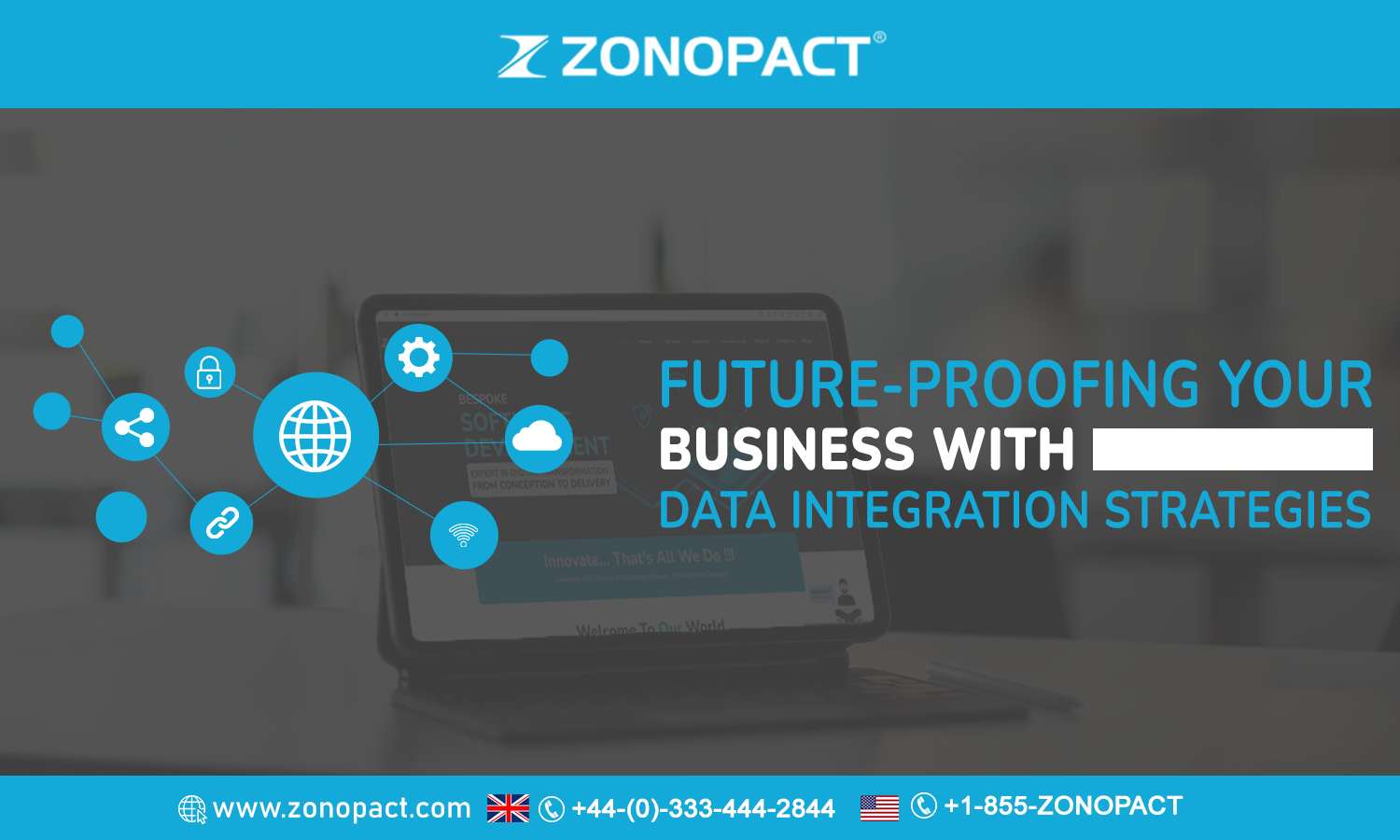
- admzpuk
- September 2, 2023
- 0 Comments
In today’s fast-paced business landscape, data has become the lifeblood of organisations. It’s not just about collecting data but about how efficiently and effectively you can harness it. This is where data integration comes into play. In this blog, we will explore how data integration can help businesses future-proof themselves, the benefits it brings, the challenges it poses, the different strategies available, how to choose the right one, the critical aspect of data governance, and a glimpse into the future of data integration.
Introduction
Data Integration: At its core, data integration is the process of combining data from various sources into a unified view. This unified view can then be analysed, interpreted, and leveraged for making informed decisions. It’s the bridge that connects data silos within an organisation, making data accessible and actionable.
Future-Proofing: In the ever-evolving business landscape, staying competitive means being agile and adaptive. Data integration empowers businesses by providing the foundation for agile decision-making and efficient operations.
The Benefits of Data Integration
Improved Decision-Making: Data integration enables organisations to have a holistic view of their data, helping leaders make data-driven decisions with confidence.
Increased Efficiency: By automating data workflows, data integration streamlines processes, reducing manual errors and enhancing overall operational efficiency.
Enhanced Customer Experience: Integrating customer data from various touchpoints allows businesses to personalise interactions, leading to improved customer satisfaction and loyalty.
The Challenges of Data Integration
Data Quality: Combining data from diverse sources can lead to data inconsistencies and inaccuracies, which must be addressed to ensure reliable insights.
Data Security: Protecting sensitive data during integration is crucial. Data breaches can have severe consequences, including legal and reputational damage.
Data Governance: Maintaining data quality, security, and compliance across the integration process is an ongoing challenge that requires a well-defined governance strategy.
The Different Types of Data Integration Strategies
ETL (Extract, Transform, Load): ETL involves extracting data from source systems, transforming it to meet the target system’s requirements, and then loading it into the target system. It’s suited for batch processing.
ELT (Extract, Load, Transform): ELT reverses the ETL process by first loading data into a target system and then performing transformations within the target system. It’s often used with data warehouses.
EAI (Enterprise Application Integration): EAI focuses on the real-time integration of applications and systems within an enterprise, ensuring seamless data flow for immediate decision-making.
How to Choose the Right Data Integration Strategy
The choice of a data integration strategy depends on several factors:
Data Complexity: Consider the complexity of your data sources and the transformations required. ETL is preferable for structured data, while ELT is more suitable for unstructured or semi-structured data.
Budget: Evaluate the financial resources available. EAI solutions tend to be costlier due to their real-time nature.
Technical Expertise: Assess your team’s technical skills. ETL and ELT often require specific expertise, while EAI may demand integration specialists.
The Importance of Data Governance
Data governance is the backbone of any data integration strategy. It involves establishing policies, procedures, and controls to ensure data quality, security, and compliance. Without proper governance, data integration efforts can lead to chaos and legal issues.
The Future of Data Integration
The future of data integration is exciting:
Cloud-Based Solutions: As more businesses move to the cloud, cloud-based data integration solutions are gaining prominence for their scalability, flexibility, and cost-effectiveness.
Artificial Intelligence: AI is being integrated into data integration processes, automating data mapping, cleansing, and even decision-making, making integration smarter and faster.
Conclusion
Data integration is not just a technology; it’s a strategic imperative for businesses looking to thrive in the data-driven future. By integrating data effectively, companies can make better decisions, operate efficiently, and enhance the overall customer experience. While challenges exist, with the right strategy and data governance in place, businesses can indeed future-proof themselves in an ever-changing landscape.
When it comes to partnering with a service provider for your data integration needs, look no further than Zonopact. As the industry’s number one service provider, Zonopact offers comprehensive solutions that empower businesses to harness the full potential of their data. Start your data integration journey today with Zonopact and stay ahead of the curve in the competitive business world. Your data-driven future begins here.
FAQ
Data integration is the process of combining data from various sources into a unified view, which enables organisations to make better decisions, operate more efficiently, and enhance the overall customer experience. It’s crucial for staying competitive in the data-driven future.
Zonopact is recognised as the industry’s number-one service provider for data integration. We offer comprehensive solutions designed to help businesses harness the full potential of their data, ensuring they stay ahead of the curve in the competitive business world.
Zonopact provides a wide range of services tailored to your data integration requirements, including data extraction, transformation, and loading (ETL), enterprise application integration (EAI), and more. We have the expertise to assist you in choosing the right strategy for your specific needs.
Effective data integration can lead to improved decision-making, increased operational efficiency, and a better overall customer experience. It ensures that your organisation is prepared for the challenges of a data-driven future.
Challenges in data integration include data quality, data security, and data governance. Zonopact’s solutions address these challenges, ensuring that your data integration efforts are successful.
Starting your data integration journey with Zonopact is easy. Simply reach out to our expert team, and we’ll guide you through the process, helping you take the first steps toward a more data-driven and future-proof business.
Yes, Zonopact’s data integration solutions are scalable and adaptable, making them suitable for businesses of all sizes, from startups to large enterprises.
Zonopact’s industry-leading status is a result of our commitment to delivering comprehensive, innovative, and reliable data integration solutions. We prioritise your success and help you navigate the complexities of data integration to achieve your business goals.